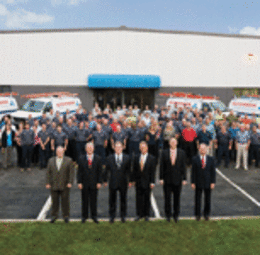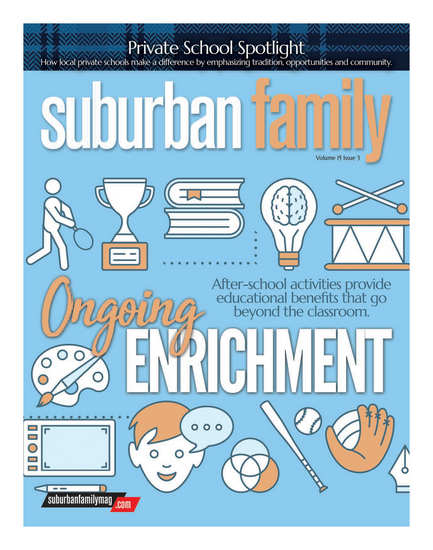
Every home has energy leaks—some more than others. They can be a result of invisible air cracks or insulation levels, heating or cooling system efficiencies, and many times, lifestyle. “Within the home, there is ‘healthy’ leakage and ‘expensive’ leakage. To provide the greatest energy savings, it is important to take a whole home approach,” says Fred Hutchinson, CEO of Hutchinson Plumbing Heating Cooling.
Give the house an Energy Star Home Audit
Improving your home’s energy efficiencies starts with an examination of the areas where leakages typically are found. Like Hutchinson, the ENERGY STAR Home Audit promotes this “whole home” approach to saving, the Hutchinson team uses it to explore ways for improving efficiencies in those areas that offer the best return on investment.
According to Hutchinson, homeowners who participate in the Home Performance with ENERGY STAR program find that their utility bills are lower and their homes are more comfortable. “Already, more than 75,000 American families have taken advantage of this program and the very real utility bill savings,” he says.
As a recipient of the ENERGY STAR Outstanding Achievement award, Hutchinson’s expert Building Performance Institute-certified technicians analyze the home’s energy efficiency. The comprehensive audit takes about one to two hours, leaving homeowners with recommendations for improving air quality, reducing drafts, maintaining consistent room-to-room temperatures and lowering energy costs.
Says Hutchinson, “We recommend that any home more than 10 years old take advantage of our complimentary audit, and this is the ideal time to bring the newest building science and technologies into the home.”
From now through Dec. 30, the NJ Clean Energy Incentive Program is offering up to $3,000 in incentives along with a 10-year, zero percent interest loan to help those who take advantage of the program. Additionally, most homes also qualify for an additional $2,600 in federal tax credits and manufacturer rebates. Each home performance audit begins with a check of health and safety items. Technicians look for un-vented appliances, asbestos-like material and dryer or other exterior exhausts and vent hazards. They review possible water-related issues, such as roof, gas or plumbing leaks, areas of standing water and visible mold. The technicians also check for the existence of carbon monoxide alarms, and perform tests to make sure your furnace and water heater are functioning safely and not producing unsafe carbon monoxide. . “Depending on the results, our technicians will clearly outline the required solutions,” says Hutchinson.
Seal in the savings
The ENERGY STAR guidelines are based on sealing a home’s outer walls, ceiling, windows, doors and floors for the most cost-effective improvements in energy efficiency and comfort. For this reason, Hutchinson’s home performance audit team carefully reviews any and all air leaks throughout the whole house— far beyond those one can easily feel by doors and windows. Often there are holes in an attic, basement and other hidden areas that once sealed can have a great impact on comfort and savings. While indoor air quality needs fresh air from the outside, it is rare that a home is ever sealed too tightly. Expert technicians can and will check for this as well.
Closely aligned with air sealing is proper insulation to ensure warmth during winter and keep a home cool when temperatures rise. Measured by R-value, or its ability to resist heat flow, technicians evaluate insulation performance in the attic, (can’t see) and more then make recommendations for additional insulation if needed. “R-value recommendations vary by the area’s climate and also where the insulation is within the home,” says Hutchinson. For example, according to ENERGY STAR, the insulation level for most attics is R-38 or about 12–15 inches, depending on the insulation type.
The performance audit’s next step is to analyze the home’s heating and cooling systems. The furnace’s age and efficiency is measured to see if it performs to standards set forth. In addition, technicians see if the home has a programmable thermostat as well, and checks the duct sealing and insulation levels. Similarly, the air conditioning system’s age and performance, referred to as SEER (Seasonal Energy Efficiency Ratio), is evaluated. Often, the result of this analysis involves the replacement of HVAC equipment, specifically if the home is more than 10 years old or not maintaining comfort. Upgrading older heating and cooling equipment with new, energy-efficient models will help with energy savings but only if properly installed. “ENERGY STAR states that, ‘Improper installation can reduce system efficiency by up to 30 percent,’” Hutchinson adds.
“Equally important is the maintenance of these systems. At Hutchinson, we recommend annual service for each unit.”
The water heater is another “hot” area when it comes to energy savings. According to Hutchinson, “Approximately 15-20 cents of every dollar spent on the utility bill is to heat the water within the home.” Ensuring the hot water heater is performing to its potential is part of the audit. As with the heating and cooling systems, upgrading the equipment with a higher efficiency model is recommended. “Tankless water heaters are gaining in popularity and can cut the 15-20 cents per dollar figure in half,” says Hutchinson.
The comprehensive home audit concludes with a review of the home’s appliances, including refrigerator, washer and dryer, dishwasher and any other equipment that uses energy and that’s efficiency can impact the home utility bill. “At the conclusion of each audit, we provide homeowners with a report card. This one-page summary lists all the various areas checked throughout the home and corresponding our recommendations. Further, it estimates the projected savings percentage associated with suggested areas of improvement. We take this projection and translate it into real dollars to illustrate monthly, annual and even 10-year savings. Clients should always see the bottom line, and we show it.”
Clearing the air
“Many homeowners don’t realize the air inside their home is ten times dirtier than that outside,” says Home, Comfort & Energy Specialist, Paul Hutchinson. “Duct systems collect all types of contaminants, including mold, bacteria and dust. Cleaning ducts and vents will not only improve the efficiency of the home’s HVAC system but also decrease the possible affects on a family’s health. The decaying and off-gassing can lead to often toxic levels and result in reducing individuals’ immune systems. Fighting off the common cold, recovering from the flu and suffering from allergies are all impacted.”
There are several permanent and cost effective solutions that can help improve a home’s indoor air quality. According to Paul, “While smaller stand-alone filters may be available, the most effective options are those that work in conjunction with the home heating and cooling systems which will both filter and purify the air.”
To trap mold, pet dander and dust, high efficiency filters can be installed within the heating and air conditioning system as these particles pass through the ducts and air cleaner. There are several models that will fit the home’s size and family’s needs. Paul says, “Purification systems that were once available only in hospitals and other facilities requiring the highest level of sterility are now available for homes. These Ultraviolet (UV) Air Treatment Systems inactivate airborne bacteria as it travels through the heating and air conditioning system.”
One Cherry Hill resident had such an air treatment system installed in his family’s residence. Soon after the installation, he wrote to Hutchinson to say that their allergy congestion had decreased…and so had their utility bill. It’s now 45 percent lower.
Experience that gets better with age
While the need to upgrade appliances and reseal air leaks does come with age, so does the benefit of experience. Finding a knowledgeable, service-oriented team with a whole home approach to safety and energy efficiency is paramount. It is important for technicians to receive on-going training and have a clear understanding of the laws and regulations affecting the industry. Further, a company should continuously anticipate market changes as a means of providing the best possible products and services. Fred Hutchinson says, “Our philosophy is simple and straight-forward—one in which we deliver what is promised as if the home is our own and refuse to say ‘can’t’ at any cost.”
Hutchinson Plumbing Heating Cooling is a family-owned 4th generation company that has been servicing the South Jersey area for more than 60 years. To learn more about Hutchinson’s whole home approach to energy savings or to schedule a complimentary Energy Star Home Audit, call (800) 360-5807 or visit HutchBiz.com.
Published (and copyrighted) in Suburban Family, Volume 1, Issue 8 (October, 2010).
For more info on Suburban Family, click here.
For information about advertising in Suburban Family, click here.
To find out where to pick up your copy of Suburban Family, click here.




